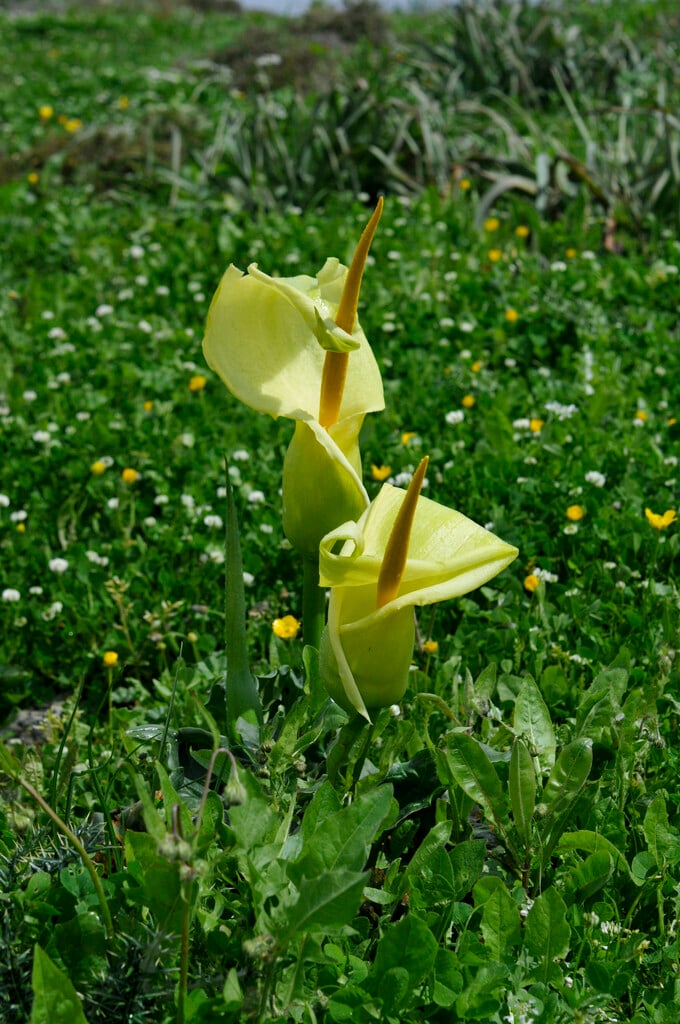Not the plant you're looking for? Search over 300,000 plants
Herbaceous Perennial
Size
Ultimate height
0.1–0.5 metresTime to ultimate height
2–5 yearsUltimate spread
0.1–0.5 metresGrowing conditions
Loam
Clay
Chalk
Moisture
Moist but well–drainedpH
Neutral, Alkaline, AcidColour & scent
| Stem | Flower | Foliage | Fruit | |
| Spring | Cream Yellow | Green | ||
|---|---|---|---|---|
| Summer | Green | Orange Red | ||
| Autumn | Green | |||
| Winter |
Position
- Full sun
- Partial shade
Aspect
West–facing or East–facing
Exposure
Sheltered Hardiness
H5Botanical details
- Family
- Araceae
- Native to GB / Ireland
- No
- Foliage
- Semi evergreen
- Habit
- Clump forming
- Potentially harmful
- TOXIC if eaten, skin/eye irritant. Wear gloves and other protective equipment when handling TOXIC to pets - see the HTA guide to potentially harmful plants for further information and useful contact numbers
- Genus
Arum are tuberous perennials with simple, arrow-head shaped leaves and tiny flowers hidden, at the base of a yellow or purple, club-shaped spadix, within a showy, hood-like spathe, and followed by red berries
- Name status
Correct
- Plant range
- Crete to SW Turkey
How to grow
Cultivation
Plant tubers 10-15cm deep in autumn or spring in moist but well-drained, humus-rich soil. Leaves are larger in partial shade, flowering is better in sun. New leaves emerge in autumn. Will be evergreen in warm climates, deciduous in cold climates
Propagation
Propagate by division
Suggested planting locations and garden types
- Cottage and informal garden
- Flower borders and beds
- Underplanting of roses and shrubs
Pruning
No pruning required
Pests
Generally pest-free
Diseases
Generally disease-free
Get involved
The Royal Horticultural Society is the UK’s leading gardening charity. We aim to enrich everyone’s life through plants, and make the UK a greener and more beautiful place.
